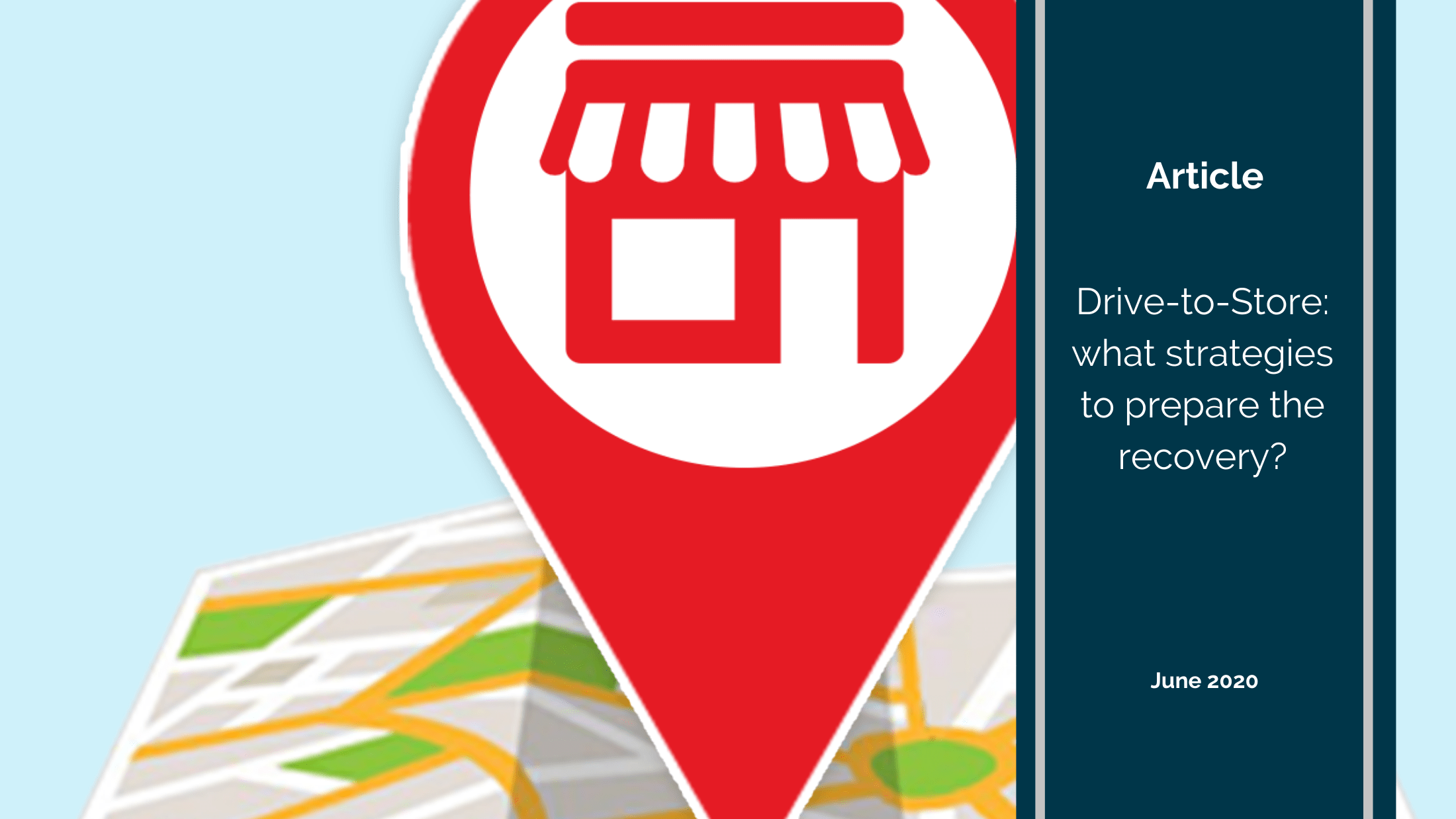
03 Jun Drive-to-store: what strategies to prepare the recovery?
From 15 June, Britain’s high streets will begin to get back to something like normality as non-essential retailers will be allowed to open their doors again after almost three months shutdown.
During this period of lockdown, the use of digital has allowed retailers to maintain an economic activity while maintaining a customer relationship. E-commerce and digital tools have therefore become must-haves in times of crisis.
Following the publication of its whitepaper “Post-lockdown strategy(ies) for retailers & brands“, B.D.C. – Digital Retail Consulting highlights Drive-to-store strategies to help retailers generate in-store traffic during the post-lockdown period.
Drive-to-Store a key element
Drive-to-Store (DTS), is the set of marketing actions aimed at attracting consumers to a physical point of sale using tools related to the Internet and mobile applications. During the buying journey, the consumer consults online resources such as reviews and eCommerce stores before purchasing in-store. It refers to the ROPO effect for Research Online, Purchase Offline.
81% of retail shoppers start their journey with online research before buying in-store
– GE Capital Retail Bank –
Generating in-store traffic has always been one of the main objectives for retailers. The latest report by FEVAD (the French Federation of e-commerce and distance selling) highlights that 91.5% of purchases in retail are still made in-store. As a result, Drive-to-Store is becoming an essential investment for worldwide retailers, representing 59% of retail advertising expenses in 2019. It is expected to reach 66% by 2023, representing more than 3 billion euros (according to IHS Markit study).
Drive-to-Store addresses 3 main challenges:
- Reduce the barriers faced during the online shopping process (product testing, payment solutions, non-responsive site, etc.)
- Prepare customer’s store visit (pre-booking visits, managing virtual queues, itinerary search, customer reviews, etc.)
- Differentiate from eCommerce pure players
5 ways to increase in-store foot traffic
1- Boost your local search rankings ⇒ focus on long-tail keywords based on consumer searches by associating them with your catchment areas around the stores.
The top 3 Google search results get 75.1% of all clicks and 31.7% of conversions
– Google –
Example of ASOS:
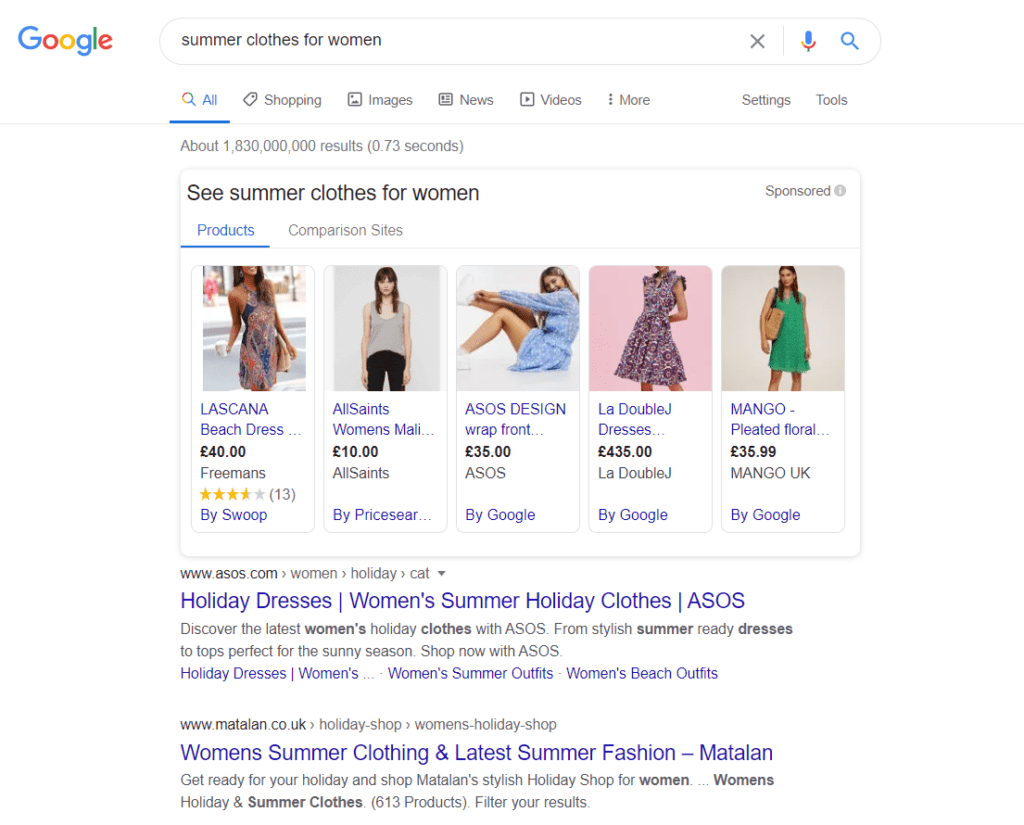
2- Optimise your store listings on the store locators ⇒ communicate and update the store listings on Google My Business (e.g. reopening dates, store hours, new delivery service, etc.) as well as on your website’s store locator. Include keywords related to your business to ensure a better SEO ranking from web searches.
72% of consumers that did a local search visited a store within five miles
– HubSpot Marketing Statistics –
Example of B&Q:
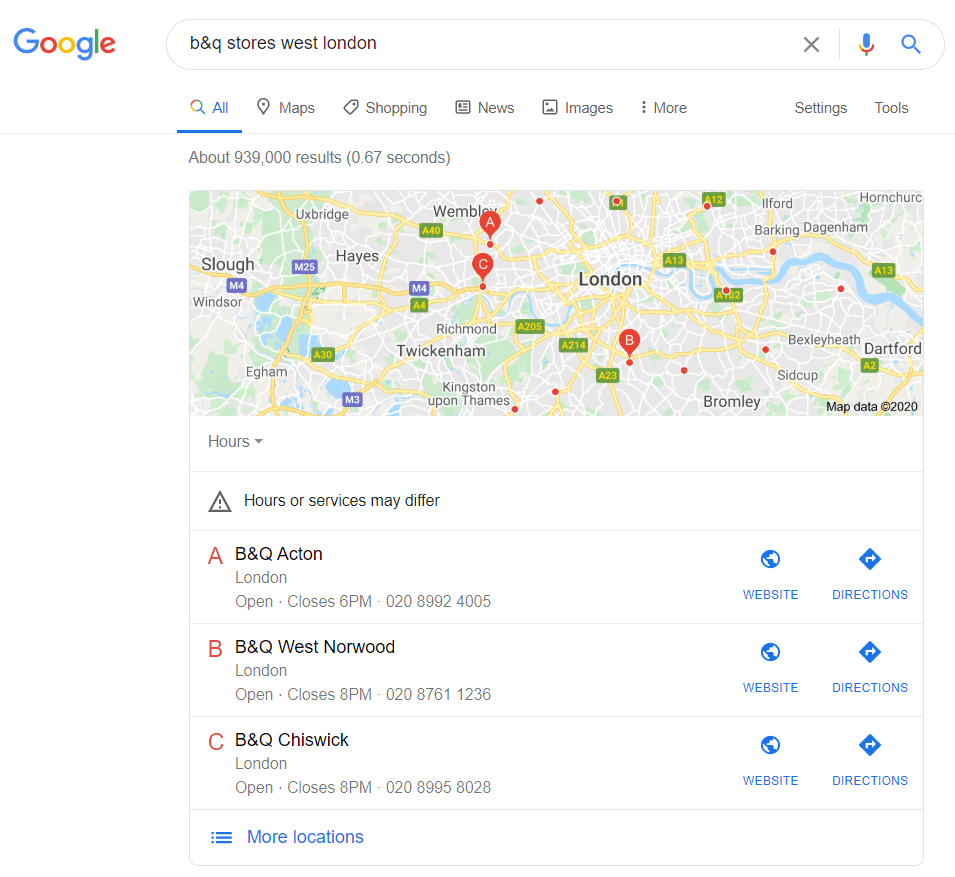
3- Capitalise on the Stock Locator ⇒ share product availability in a specific store and display all stores where the product is in stock or identify the closest store where the product is available.
65% of consumers conduct online product research before stepping foot in a store
– Retail Dive –
Example of Boots:
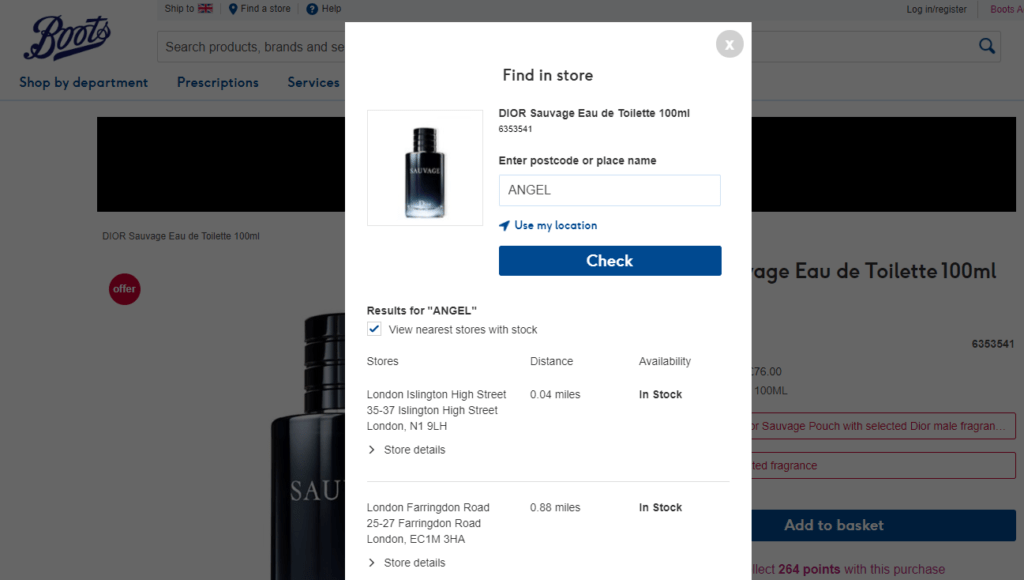
4- Expand your delivery offer to Click&Collect, E-booking and car delivery contactless ⇒ to respond to new consumer trends and health standards, expanding its delivery services can be strategic. Also, soon, investing in contactless Click&Collect services would boost customer experiences and add long-term brand value by enabling safe pick-ups.
More than 70% of British consumers now order goods through Click&Collect an average of twice a month
– Barclaycard –
Example of Dunelm:
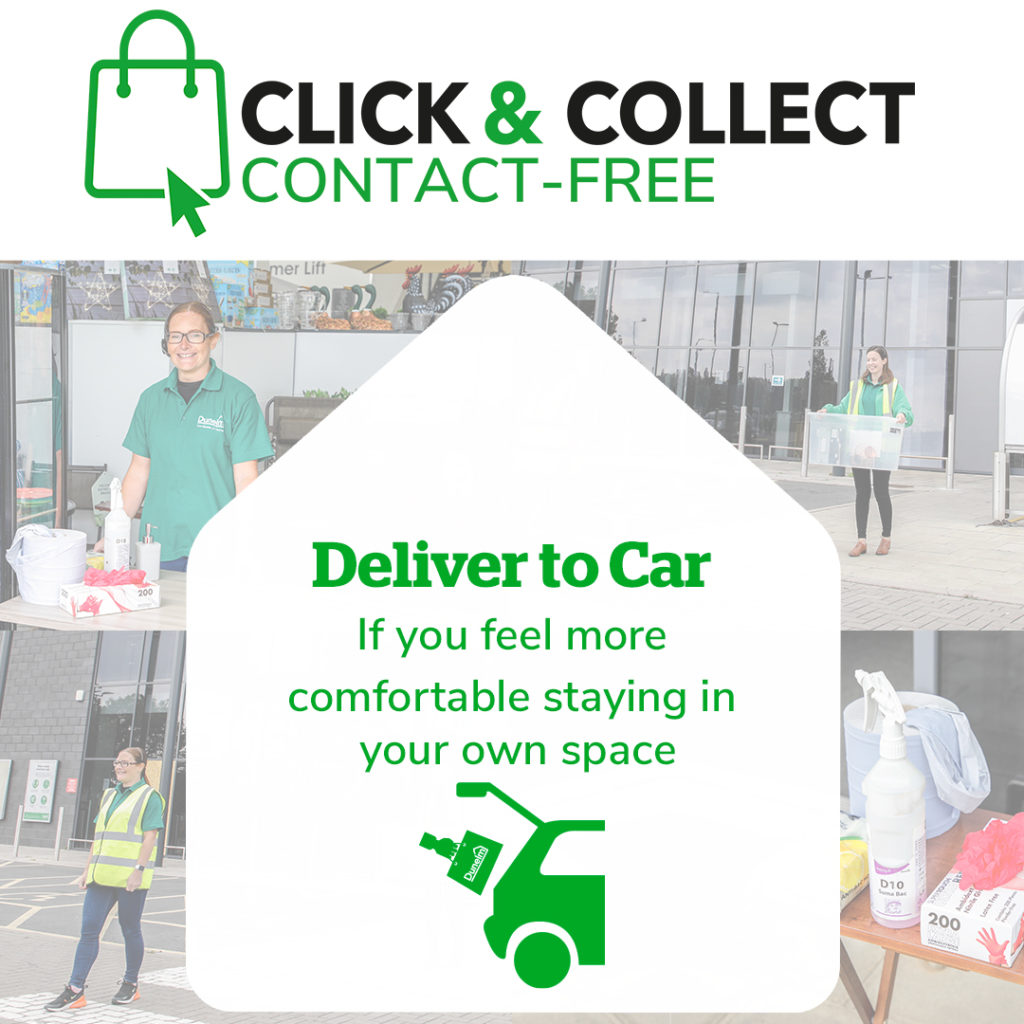
5 – Integrate online booking options ⇒ allowing customers to book time slots to visit your stores is a great way to limit the number of people inside, stagger customer visits throughout the day, ensure social distancing measures are followed and create a better overall customer experience.
Almost 75% of shoppers say they will return to shopping centres only if stores have a raft of hygiene and safety measures
– Retail Gazette –
Example of IKEA:
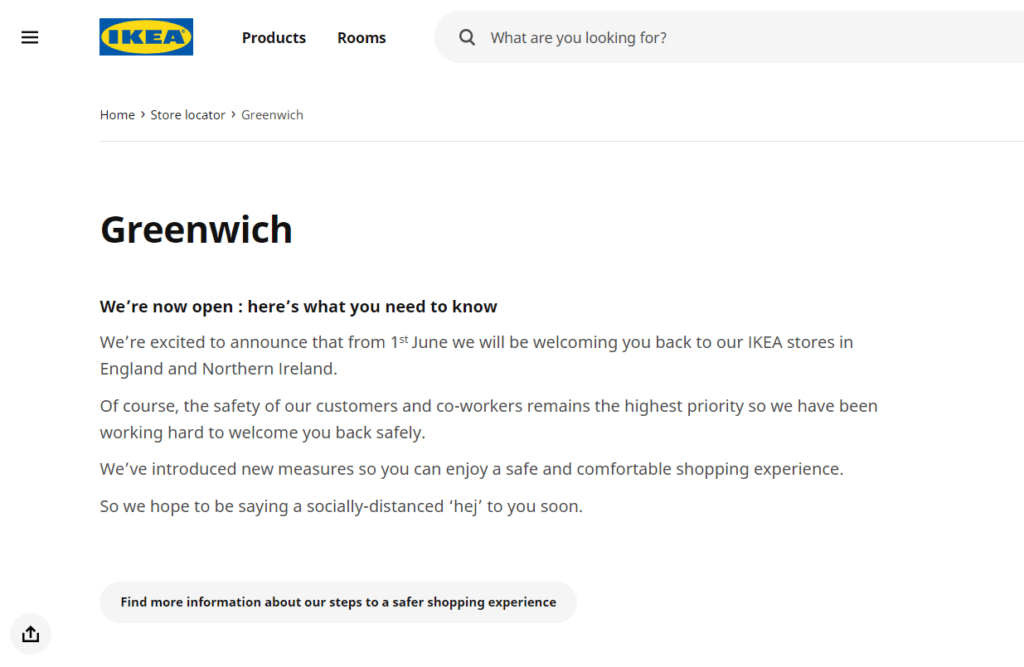
The post-lockdown will be the right time to accelerate your digital transformation to build a resilient business within an agile organisation. It’s not too late to get started!
If you are interested in finding out more, please contact our team! We will be happy to talk with you.
Contact :
Elodie Garicoitz
Retail & Digital Consultant
elodie@bdc-retail.com

